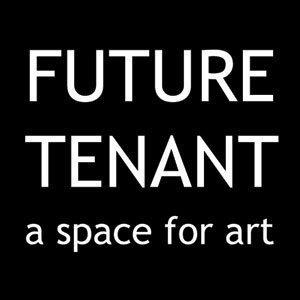"Flash: From the studios at the CMU School of Art", is a group show presenting work by 10 talented young artists from Carnegie Mellon University's School of Art opened on Friday, April 3rd. "Flash" refers to a sudden appearance of inspiration, just like how art is born. During the exhibition period of Flash, Visual Programming Manager Kate Lin will be interviewing the artists to know the stories behind their work.
Could you give us a brief introduction of who you are and how you became an artist?
Tyler: I’m a senior at the School of Art of Carnegie Mellon University. I spent my childhood in Japan and the rest of my life in the US, so I have developed a cross-cultural perspective that is integrated into my work. Since around middle school, I began drawing comics, and kept it as a hobby throughout my life. Animation was a natural transition for my work, after I realized that I wanted to turn my hobby into my profession.
Can you briefly talk about each of the five video works and the concepts behind those works?
Tyler: I made, My Ex-Girlfriend Never Farted, after returning from a study abroad program in Japan. It had been the first time revisiting Japan since I was a child, and I noticed some aspects of Japanese culture with which I was no longer aligned. Specifically, this piece comments on the lack of farting female characters in anime, as if there is a taboo on the subject matter; this looks at the contrast between ideals and reality as depicted in the media.
OREMO is a continuation of observing anime culture in Japan. Another look at the differences between ideals and reality, the work portrays how a protagonist of an anime would realistically live his life in Japan. The protagonist also represents the isolation many people experiences in the cities of Japan.
With the piece Memory, I expressed my believe that sound is just as important as visuals for an animation. From time to time, I make animations based on a soundtrack, to help myself understand the synchronization of sight and hearing. This piece also features my interest in motion graphics, something I find I want to incorporate with my hand drawn animations.
I made Lullaby just for fun. Sometimes the most entertaining works are those of which you had no reason to make.
Midterm was a collaborative piece, using my story about how CMU students can feel during midterms and final exams. I enjoy working in worlds linking dream and reality, as well as exploring natural character interactions.
What is your creative process? How long does it usually take you to complete a project or artwork?
Tyler: I’m a sporadic worker. I usually wait until the right idea comes rather than trying to actively find it. My creativity comes from observing the fiction and reality, then discovering what’s between them. I believe that your work is only as good as how much you have put into it, so I end up spending a lot of time on mine. Producing animation is a complicated process, going from an idea to the final film; making a two to three minute animation has taken up to 300 hours. To be honest, what really determines how long it takes to finish an animation is the date you start working on it and the date it’s due.
Do you admire any other artists?
Tyler: James Kochalka’s work encouraged me to begin writing my own comics, as well as numerous other autobiographical cartoonists, such as Ryan Pequin and John Campbell. Since my move towards Japanese animation, I found that I really enjoy directors Akiyuki Shinbo and Hiroyuki Imaishi for their art direction in animation.
Are you working on any new projects at the moment? And where can we follow your work?
Tyler: I’ve been working on my current project, Otaku, for a year now, but it’s still far from completion. Otaku is a combination of manga and anime elements in a video game form, about otaku culture in Japan and differences in Japanese and American culture. Visually, the game reads like a manga, but the viewer can choose what the protagonist will say when he interacts with other characters, and ultimately controls his fate as an otaku. The team I’m leading to produce this game is aiming to push the game onto the PlayStation Store sometime next year, but it’ll also be available to play on Mac/PC. Updates can be found on tylerporten.com.
I know that you are graduating soon, what are you next steps and where do you see yourself in five years?
Tyler: I’m currently enrolled in CMU’s Accelerated Masters of Human-Computer Interaction program, where I’m applying my animation skills on interaction design for things like smart phone UIs. I’m graduating from my undergrad this May and then I’ll be graduating from my masters in December. I’m not sure which direction I’m heading, but hopefully I can pursue a profession in both animation and design. I’ll continue to work on Otaku in the meantime, which will most likely lead me to work on more projects bridging Japanese and American cultures. In five years, I’m hoping to be back in Japan creating progressive animations and games for a universal audience.

